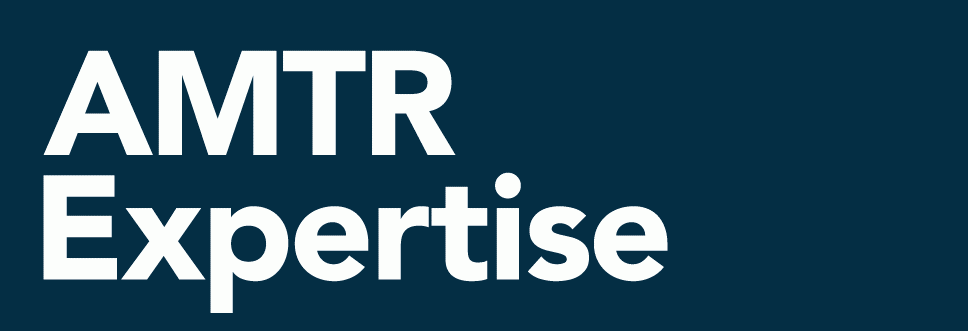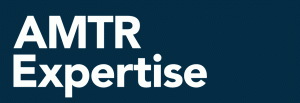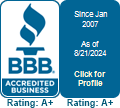The city of New Orleans is seeking a private operator to purchase the NOPB Railroad in order to provide help with capital improvements and maintenance costs. According to New Orleans officials, it is hoped that the new agency will help improve commerce, as well as “maintain a competitive rate structure” to attract new customers. The NOPB connects with all six Class I railroads and provides switching and haulage service. An estimated one-third of all east-west rail traffic crosses the Huey P. Long Bridge segment of the railroad. The selection process is expected to be finalized by summer, and therefore all shippers who utilize this short line should be vigilant in getting ahead of any tariff or rules updates.
Increased Rates Likely
Many larger less-than-truckload (LTL) carriers emerged from 2016 with much lower profit margins than anticipated. However, things are looking up in 2017. As of February, LTL volume has grown to the point that carriers are confident that rates may be raised soon.
A recent joint survey by NASSTRAC, Journal of Commerce and Truckstop.com found that less than half of the 14,000 shippers and brokers surveyed anticipate only a slight rate increase. Some 14 percent of those surveyed expect rates to drop. Logistics Management forecasts a 2% increase in LTL pricing; however, several LTL carriers have published a 4.9% rate increase to encourage growth. As rates increase, AMTR’s ‘Smart’ Auditors can help you to ensure that you are not overpaying.
Freight that is incorrectly described on the bill of lading or misclassified on an inspection is the single largest driver of overcharges on less-than-truckload freight. Regardless, the issue can be mitigated with knowledge and preparation. When a shipper is preparing a bill of lading, they should research the product in question to ascertain its true characteristics. For example, this allows a centrifugal exhaust fan to be rated as NMFC 61900 “Fans, exhaust or ventilating” as opposed to the less specific NMFC 115030 “Centrifugal Fans” or, even less specific still, NMFC 133300 “Machinery, NOI”—both of which have higher classes due to density scales.
A thoroughly-researched classification on the bill of lading will prevent many overcharges. However, when a freight inspection results in a misclassification—and often an overcharge—there are avenues to dispute the inspection’s erroneous findings. According to NMFC 100-AP Item 360 Sec. 3, freight charges must be collected according to the proper description of the freight in question. This is to say that a carrier inspection is not the final word on the description of freight. By providing shipping documents identifying exactly what the items shipped were, as well as product documentation to explain why the proper description is different from the inspector’s description, a shipper may dispute the inspection findings. AMTR has experienced great success in achieving refunds for our clients by employing these methods and we would like to do the same for you!
An issue which AMTR has consistently observed to produce billing errors is the disparity between what a shipper thinks happens versus what actually occurs. This can manifest in many different situations. Sometimes carriers reroute shipments for the convenience or needs of their operations. Contract rates that take longer than anticipated to negotiate are not applied correctly, the amount billed does not reconcile with the amount paid to the carrier because their order and payment systems are not synced, or there may be other applicable documents such as emails, applied credits or manual adjustments made to bills.
It is not an uncommon practice for bills to be updated one or even numerous times and the incorrect or multiple bills to be paid. Many times the only way to see these trends is with a long-term historical perspective on all of a shipper’s freight bills and payments. This is exactly what AMTR Smart Auditing© does, by looking at the long term trends of both freight bills and their associated payments using our proprietary IT tools. Let AMTR get your company in sync with its refunds!
February is often regarded as the month of love and a perfect time to reflect on ways we can avoid losing love for our jobs. Factors such as long work hours, assignment overload and tight deadlines can lead to stress and burnout. According to a recent Harvard Business Review article titled “Why Some People Get Burned Out and Others Don’t,” employees can reign in job stress with three mental shifts. First, “don’t be the source of your own stress.” Try to avoid the need for perfectionism and constant high achievement. Next, “recognize your limitations.” If you do not have the knowledge or expertise to do something, be honest and ask for help. Finally, “reevaluate your perspective.” Recognize the situation for what it is—a threat to something you value or simply a problem to be solved.
Securing the “free” freight cost auditing services of AMTR is one way to reduce such stress and burnout. Today, as transportation-specific knowledge in many companies wanes, the pressure on those employees left to handle the spectrum of freight-related tasks is increasing. In reflecting on the mental shifts recommended above, a choice to use AMTR Smart Auditing© to augment company operations acknowledges that transportation payment problems can be more efficiently and effectively handled by knowledgeable experts who focus on such issues 100% of the time.
When it comes to freight cost auditing, AMTR can help you to love your job more by handling the tasks you love less, while saving you money at the same time. What’s not to love about that?
In accordance with the Climate Leadership Act of 2016 and effective January 1, the Canadian Pacific will apply an AB Carbon Levy Surcharge, either per mile or per container (CP 9800). Also adding carbon surcharges is the Canadian National Railway. Effective in April, a tax will apply to shipments traveling to, from or within Alberta. The British Columbia tax will change to a per mile rate, with the exception of intermodal, which will remain per unit rates. The CN has also decided on several changes that will become effective February 1 and will affect shippers’ freight payables. These changes are applicable to CN tariffs 9000, 9002, 9003, 9004 and 9100.
Kansas City Southern de Mexico has announced that beginning in 2017, the Mexican Energy Regulatory Commission has deregulated fuel prices. There are expected to be increases in the average price of diesel fuel, as well as changes to how shippers can view the reduction on rate discount program.
The new year brings new challenges and opportunities for the rail freight community, as it remains unclear what new policies might result from the new presidential administration. Meanwhile, the Surface Transportation Board continues to preside over the debate of reciprocal switching. Looking to the future, Positive Train Control—technology designed to remotely stop train derailments and deadly accidents—is on track for full implementation by the December 2018 deadline.
One of the many tasks performed at AMTR is the investigation of all available rates. Most companies who say they audit freight invoices are only running customer-specific criteria through a rate engine that is preset with rates the client has provided. At AMTR, there are several layers of investigation performed when reviewing a customer’s lanes. This will include requesting any negotiated contract rates from the client, as well as a comprehensive review of all of the carrier’s published rates. Many times, we will discover rates for the same lane and criteria in multiple items or documents.
Within all these documents are also notes, conditions and exceptions. A client may not realize that contract rates are often made and set without this detailed comparison. Additionally, rates such as public mileage scale items may not be updated routinely, whereas your contract rates take set increases annually. Sometimes these increases actually surpass the public rates. We bring this type of scenario to the client’s attention and suggest that they revise their contract. Clients often trust that the carrier is giving them the best rate. Arm yourselves with knowledge—the type of knowledge that only AMTR can provide.
As shippers and truck carriers continue the negotiation of contracts for the new year, many industry analysts predict that conditions moving into 2017 will generate higher costs for carriers, and therefore, higher rates for shippers. The trucking industry experienced an increase in volume during the fourth quarter of 2016. This trend is expected to continue throughout 2017, driving the opportunity to increase contract rates. Any changes in contracts may lead to rating errors during the transition period.
In related news, third party contracts between carriers and shippers are becoming increasingly necessary. The Private Motor Truck Council of Canada (PMTC) is hosting a seminar on January 26, 2017 to discuss third party contracts and mandatory training for entry-level employees. It is a common belief that carriers are not eager to sign contracts with shippers; however, this is incorrect. Carriers are willing to negotiate contracts with repeat customers.
Finally, President Donald Trump has voiced intentions to invest $1 trillion into United States infrastructure during his presidency. He plans to offer tax incentives to private businesses that invest in infrastructure; this will likely result in more toll roads around the country. Trump also introduced a plan to back out of billions of dollars in global warming funding intended for the United Nations. These funds will be used to invest in infrastructure, lessening burdens on tax payers.
A shipment’s lineal foot measurement is the amount of floor space occupied from the nose to the door axis of a trailer. Lineal foot charges are assessed by carriers on shipments where the lineal footage exceeds the limit set in the carrier’s rules tariff or their contract with a shipper, with height and width thresholds coming into consideration, as well. The majority of lineal foot charges are assessed through an elevated mileage rate or through a rerating of the shipment at a pounds per cubic foot calculation and a specified rating class.
Whether or not a shipper is subject to lineal foot charges is often dependent upon how efficiently a carrier loads handling units. For example, take eight skids measuring 40Lx48Wx60H. The minimum amount of linear feet this shipment could occupy is 13.333, achieved through loading the skids two wide oriented so they take full advantage of the trailer’s width, while minimizing length. Orienting the skids so they fit two wide but do not take full advantage of the trailer’s width, 48Lx40Wx60H, results in a linear footage of 16. The net difference is 2.667 linear feet, and potentially thousands of dollars.
AMTR has experience in identifying incorrectly loaded shipments that resulted in lineal foot charges and has in-house applications that allows the creation of a three-dimensional model of optimal handling unit layouts. Let AMTR take a look at your large volume shipments to see if lineal foot charges are being applied in error.
There is no doubt that technology has improved our personal and professional lives in many ways. According to Sydney Finkelstein of BBC, “We live in a world of curation. The internet—aided by algorithms that predict what we search, buy, listen to, read, watch and even who we want to date and marry—expertly helps [us to] find what we want.” We humans enjoy this, as our interests, opinions and thoughts are continually reinforced. However, the dark side is that we do not realize how these algorithms, formed from previous searches and actions, are bounding our thinking and exposure to new ideas. A similar idea was highlighted in a recent Harvard Business Review article entitled “Beware the Confirmation Trap When Analyzing Data,” which stated, “…we’re likely to pay more attention to findings that align with our beliefs and to ignore other facts and patterns in the data.”
When these ideas are applied to freight audits, it becomes clear that they should not be accomplished in a silo. No single rate engine, publication or algorithm can always accurately determine the correct charges to be billed to a shipper. That is what Smart Auditing© is all about—combining leading-edge technological tools and, most importantly, the creative minds of human, expert auditors who are not trapped by algorithms or even the common patterns of thinking that can evolve in organizations.
Start the year off “Smart” by letting AMTR help you avoid confirmation traps and the consequences of bounded thinking. Fresh minds and a new look at your freight costs mean greater refund savings for you!














